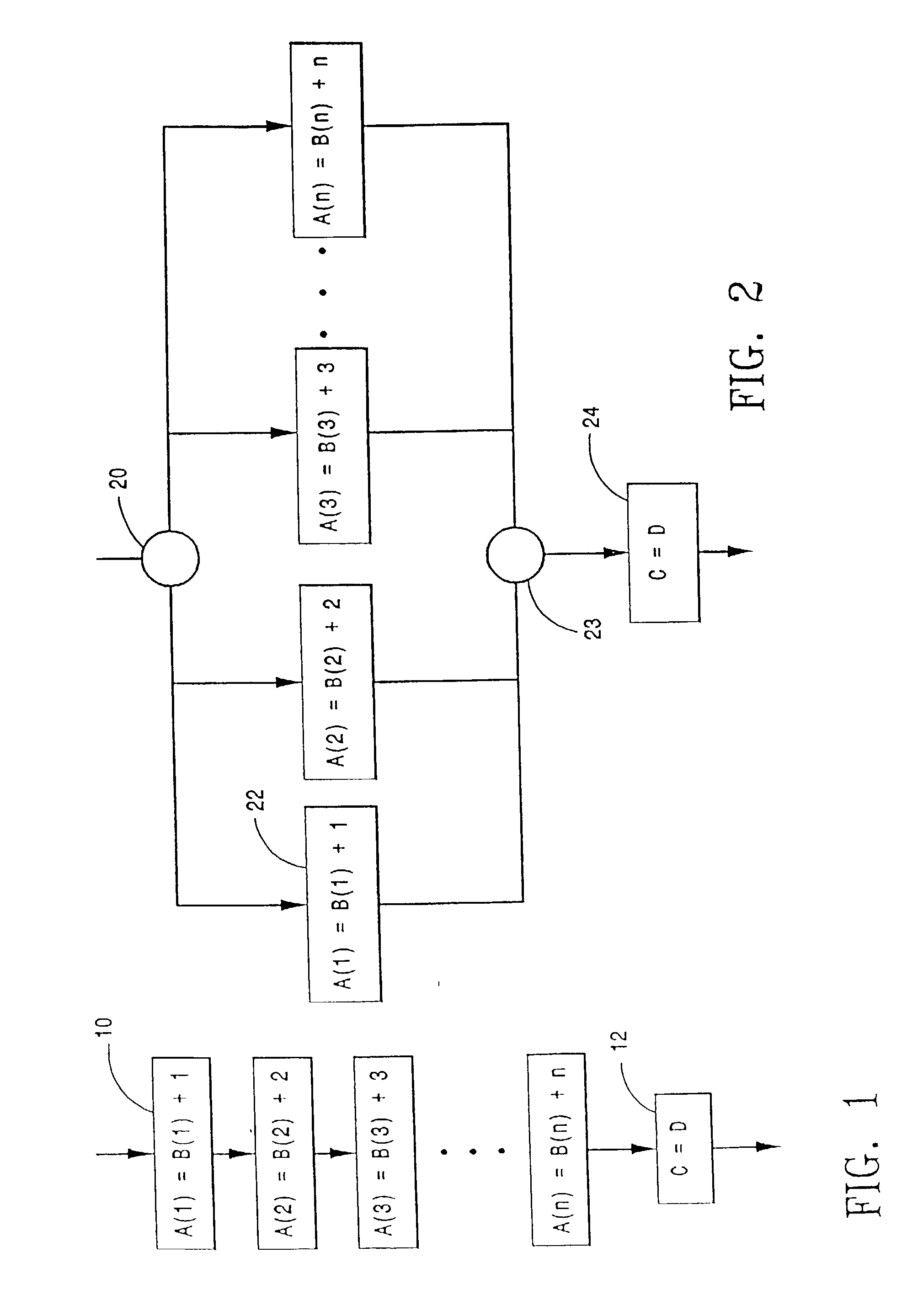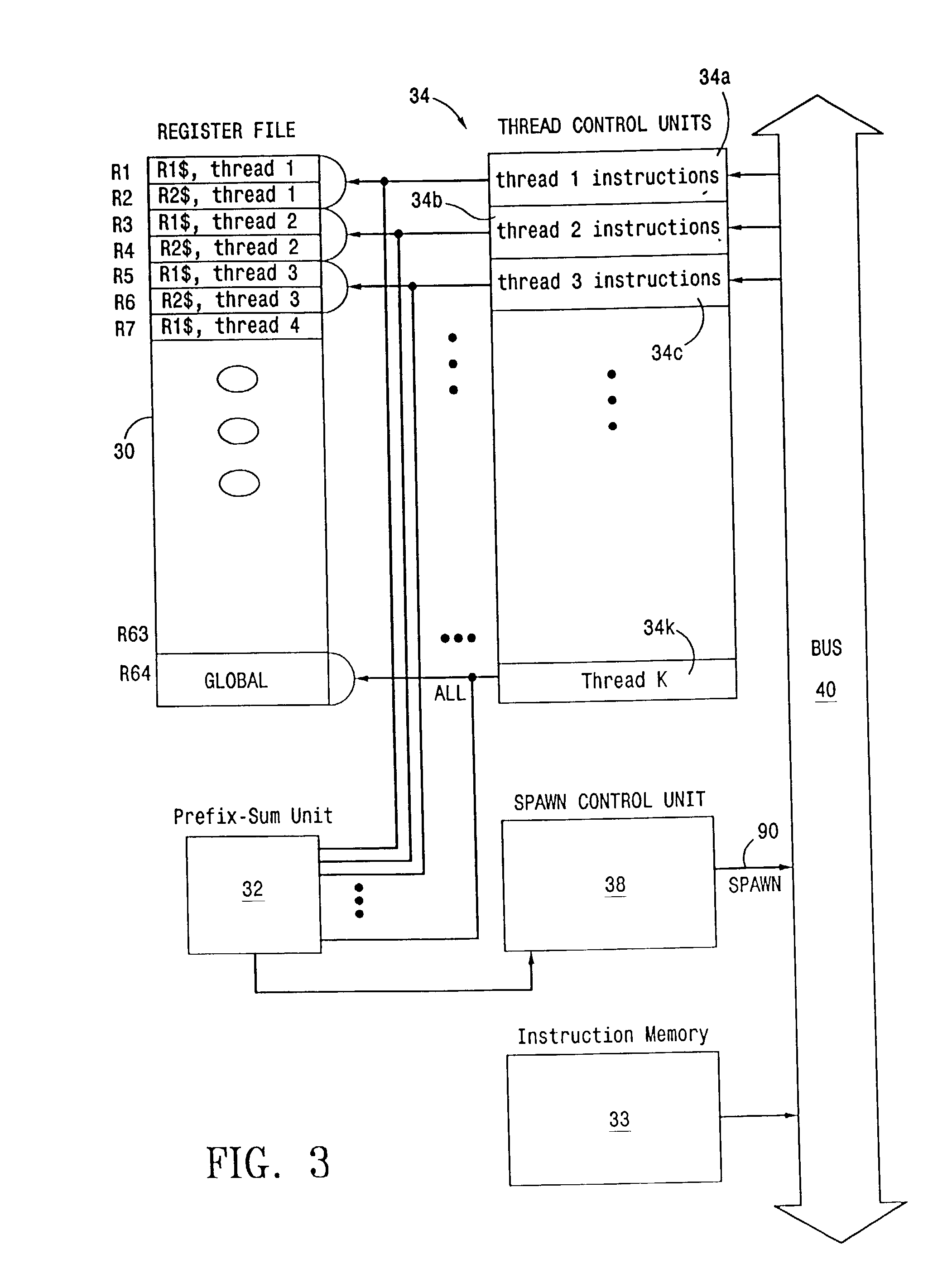Spawn-join instruction set architecture for providing explicit multithreading
a technology of instruction set architecture and instruction set, applied in the direction of multi-programming arrangement, instruments, program control, etc., can solve the problems of conflict between threads, concurrent write access to shared memory, and the inability to extract sufficient ilp from current cod
- Summary
- Abstract
- Description
- Claims
- Application Information
AI Technical Summary
Problems solved by technology
Method used
Image
Examples
Embodiment Construction
[0104] Suppose a problem with:
[0105] a first array A=A(0), . . . , A(n-1), whose elements are integers and where n is an integer;
[0106] a second array B=B(0), . . . , B(n-1), whose elements are integers and where n is an integer; and
[0107] a third array C=C(0), . . . , C(n-1), whose elements are 0 or 1 and where n is an integer.
[0108] For each i, 0.ltoreq.i.ltoreq.n-1, for which C(B(i))=1, copy A(i) into a different entry of a fourth array D=D(0), . . . , D(s-1), where s is the number of ones in C(B(i))=1, over 0.ltoreq.i.ltoreq.n-1.
[0109] The problem may be modeled on the algorithmic level by the following high-level program:
2 . . . int x; x=0 SPAWN(0, n); { int e; e=1; if (C[B[$]]==1) (PS(x, e); D[e] = A[$]} } n=x . . .
[0110] In the above program, x is initialized to 0. Then, the SPAWN command spawns threads 0 through (n-1). Although not explicitly stated, a JOIN command is implied by the bracket "}", which ends the scope of the SPAWN command. The JOIN command is implemented using...
PUM
 Login to View More
Login to View More Abstract
Description
Claims
Application Information
 Login to View More
Login to View More - R&D
- Intellectual Property
- Life Sciences
- Materials
- Tech Scout
- Unparalleled Data Quality
- Higher Quality Content
- 60% Fewer Hallucinations
Browse by: Latest US Patents, China's latest patents, Technical Efficacy Thesaurus, Application Domain, Technology Topic, Popular Technical Reports.
© 2025 PatSnap. All rights reserved.Legal|Privacy policy|Modern Slavery Act Transparency Statement|Sitemap|About US| Contact US: help@patsnap.com



